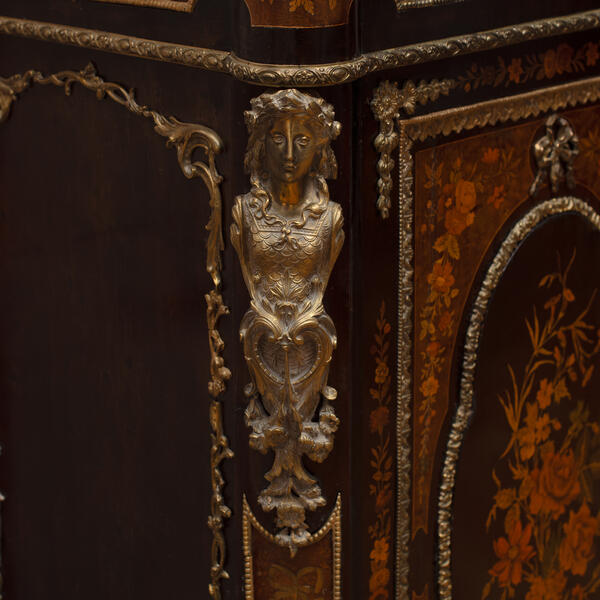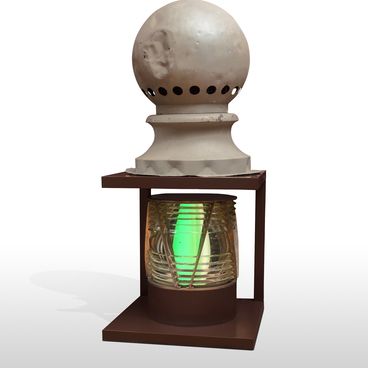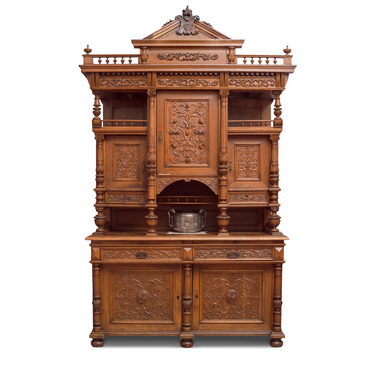The elegantly decorated console cabinet takes pride of place in the exhibition. Initially, the term “console” referred to a structural element that supported a projecting part of a building such as a balcony or cornice. In Latin, “consolidare” means “to support” or “to reinforce.” In furniture design, the term “console” refers to a narrow table or cabinet placed against a wall.
Console furniture came into fashion in 17th-century France, during the reign of Louis XIV. Such furniture was made of valuable wood and bronze and was often decorated with gilding. Craftsmen used curved lines flowing into each other and symmetrical patterns. Consoles were also decorated with sculptured mounts.
The console cabinet from the museum collection is decorated using the intarsia technique. It is a form of wood inlaying that involves inserting one material into another. The cabinet was made of dark wood that was used as a background for a variety of decorative elements.
The craftsman placed symmetrical oval panels with floral compositions on both doors. The decorative inlays with floral patterns were placed over the entire surface of the cabinet. The décor also features bronze mounts in the form of caryatids, bowknots, and flower garlands. In the lower section of the cabinet, the craftsman added several mounts shaped like intertwined vines. The side walls feature bronze decorations designed to look like climbing plants.
The wall cabinet was designed in the Boulle style, named after André-Charles Boulle. He was a famous French cabinetmaker, engraver, and artist who became known for decorating furniture using the intarsia technique.
André-Charles Boulle created intricate floral designs from different types of wood. He also used bronze mounts and inlays of tortoiseshell, ivory, mother-of-pearl, and silver.

